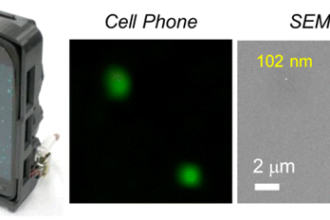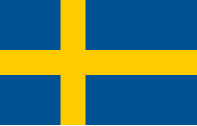Editor’s note: This video interview is actually a continuation of our Mobile Health Around the Globe post today on Nadi Kaonga’s social networking analysis of the Millennium Villages project in Ghana.
Editor’s note: This video interview is actually a continuation of our Mobile Health Around the Globe post today on Nadi Kaonga’s social networking analysis of the Millennium Villages project in Ghana.
The Millennium Villages Project (MVP) is an integrated and community-led rural development program in Africa. Social networking analysis was done on the CUG (closed user group) of cell phone users in the MVP in Bonsaaso, Ghana. The analysis showed that the traditional social structure which was hierarchical and followed a rigorous chain of command was disrupted by the introduction of the mobile phones. After introduction of the cell phones, communication among the users was freer, more open and more direct. Please read the entire accompanying post for more detail.
In this video interview, Nadi Kaonga goes into a bit more detail on the analysis and results.
Nadi recently received an MHS degree in the International Health Department’s Global Disease Epidemiology and Control Program at the Bloomberg School at Johns Hopkins. Her study on this project was recently published in the Journal for Medical Internet Research. Nadi can be reached at @nkaonga.
Following is an interview with Nadi:
Video Transcript (by TranscriptionStar)
Joan: Hallo, I’m Joan Justice with HealthWorks Collective and I have with me today Nadi Kaonga, a recent graduate of the Bloomberg |School of Public Health at Johns Hopkins University. Nadi recently received an MHS degree in the International Health Departments Global Disease, Epidemiology and Control program at the Bloomberg School at Johns Hopkins. And she’s been working on the millennium village’s project and has conducted some very interesting research using social networking analysis methods at the site Bonsaaso, Ghana. Nadi, why don’t you tell us a little bit about the millennium village’s project in general and then a bit about your work there doing the social network analysis?
Nadi: Sure, so the millennium villages project is taking place across 14 sites and 10 sub-Saharan Africa countries, where they are looking at different ways that they can bring communities to empower themselves through various initiatives. And so the team that I have been working on was focused on health initiatives within all… across all their mobile millennium villages’ sites and we are focused on mobile health initiatives and sort of setting up an electronic health architecture across these various sites, but then in particular for the piece that I was interested in, was in the particular side of Bonsaaso Ghana. They had setup a mobile phone closed user group and what a closed user group is, you, we provided phones to the health team there and that meant that they were able to speak with one another at no cost because they were all part of this closed user group.
And we had worked very closely with mobile network operator on that site to be able to set this up. And in particular I was interested in, okay what ways can we evaluate or asses you know how useful has a closed user group been? How has it sort of changed the traditional flows of communication which before were extremely you know, head of the chain, top down, hierarchical? And one way that we thought about this was ,lets borrow from the social sciences social network analysis methods and it’s been here somewhere in public health research when looking at infectious diseases or communicable diseases, like HIV/AIDS to sort of map out the transmission or different like sexual networks. You know sort of following around infection, where the spread an infection and so we are like okay well we are looking at an initiative that sort of is looking at the spread of information. So how can you sort of like analyze this and also bring it sort of these different conceptual ideas to how the network looks? And so social networking analysis methods lent itself very nicely to what we are interested in doing.
Joan: Cool and what were the results that you found Nadi?
Nadi: Yeah, it was very interesting. So some of the results that we found was, before like I was saying that the communication was very like top down or like you know bottom sort of moving up the chain going high to the management of the health team in Bonsaaso. So its like if the health team management needed to communicate with the somewhere based in the community, they typically would have to go through you know the manager or the supervisors in between and then that message would spread to the community based health staff. But what we are finding with the advent of you know using the closed user group was, people were establishing more direct communication channels and so you would find that community based health workers were communicating directly with the management and vise versa, and sort of bypassing this sort of traditional communication structure. So that was a very interesting kind.
Joan: So they were making more phone calls and for what to ask for information and to ask for advice maybe and to be sure for what they were doing if it was correct? So that’s a positive, right? They were asking for information and…?
Nadi: Absolutely
Joan: Yeah, that’s great and these phone calls were free?
Nadi: Yes. So the phone calls within the network were free and then the people could place calls outside of the network to those who weren’t here within you know the closed user group. But another interesting thing that we found sort of when we were going through our analysis of not only the social network data but we complimented it with interviews so qualitative components as well, was that people were really happy using the phones personally both within the network and outside of the network.
Joan: Sure
Nadi: So they were slowly establishing these personal connections with people, you know, within the sort of working environment and outside of that. And in terms of the communications that they were having with work colleagues besides the personal calls, they were, they definitely were like you had mentioned, they were seeking advice, they were coordinating with one another, they were more, better able to sort of engage with the emergency medical services that were within this rural community. Whereas before I remember this one individual had mentioned you know before they used to have to get some one to bike down to a whole different community where the ambulances were staged and so that person has to bike down and say we need the ambulance and then you know, then the ambulance would come but now they are able to call directly and say “Hi you know I need you at this particular site or at this particular location”.
So its definitely improving some work efficiencies around that and that was sited as some of the benefits around that. In addition to you know, I remember also a community health worker expressing like how she feels more empowered because for some health condition she was able to communicate directly with, I believe it was one of the members of the health team management because her immediate supervisor wasn’t sure of what to do. And so she took that as a learning opportunity after speaking with the health team management and getting this advice on how to take care of the case that she was like ‘now, you know like I’m able to address that issue because I learned it and you know the community that think I’m like more smatter than I was before so’…
Joan: That’s great and much more open, freer , lines of communications so that people can learn more and be more efficient and all that. And you are writing this up Nadi now your paper has been accepted in which journal?
Nadi: The Journal of Medical Internet Research.
Joan: Okay, and that will be coming out then in the next month or so?
Nadi: Yes that’s what we hope for.
Joan: Okay, that’s just great and congratulations on the study and thank you so much for this. It’s been really interesting to learn about the program and the social networking analysis. Thank you so much for joining us.
Nadi: Thank you so much for having me and it’s been a pleasure getting to chat with you; especially about some of the research work that went on.
Joan: Thanks.
Nadi: I appreciate it.






